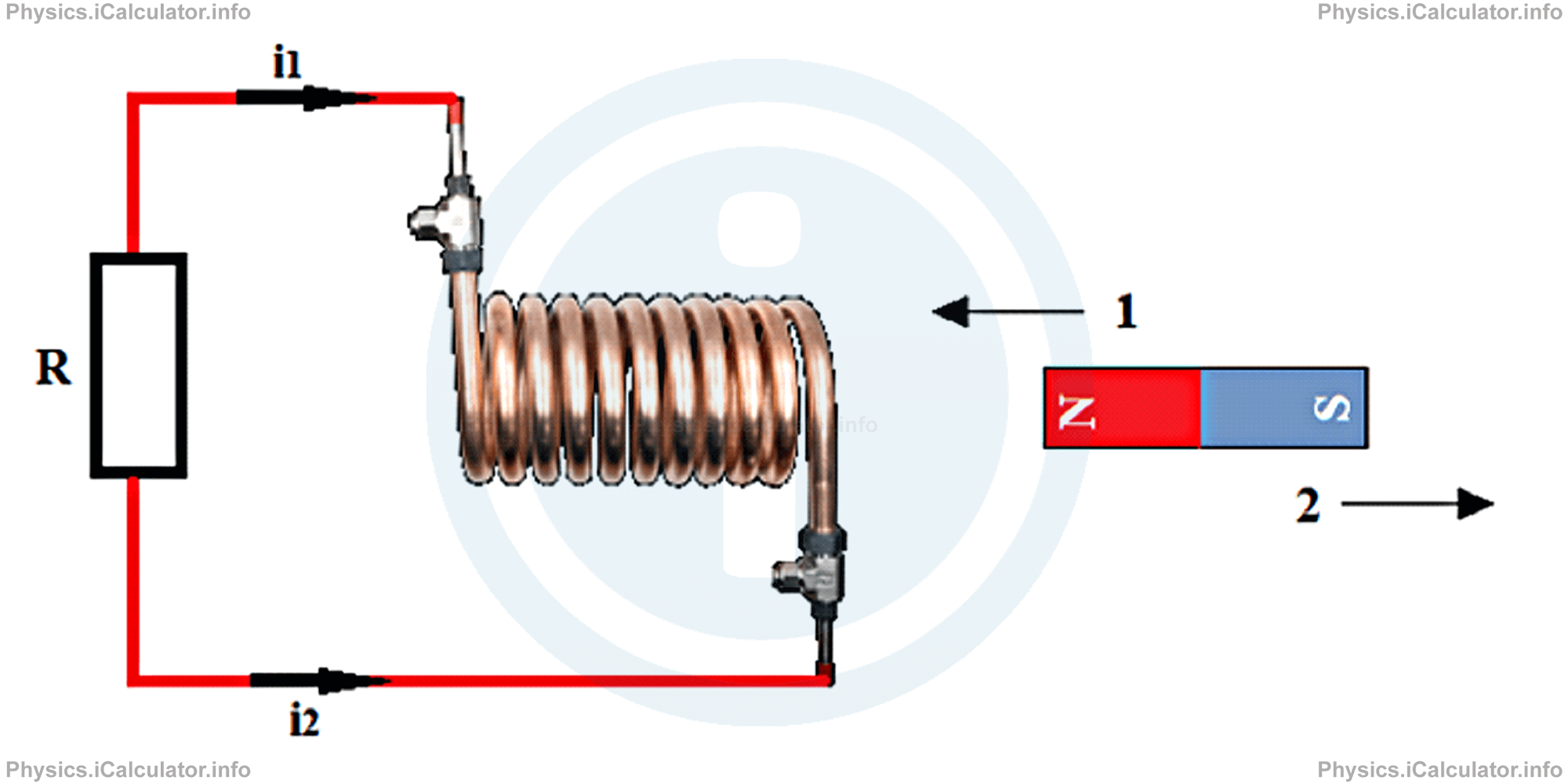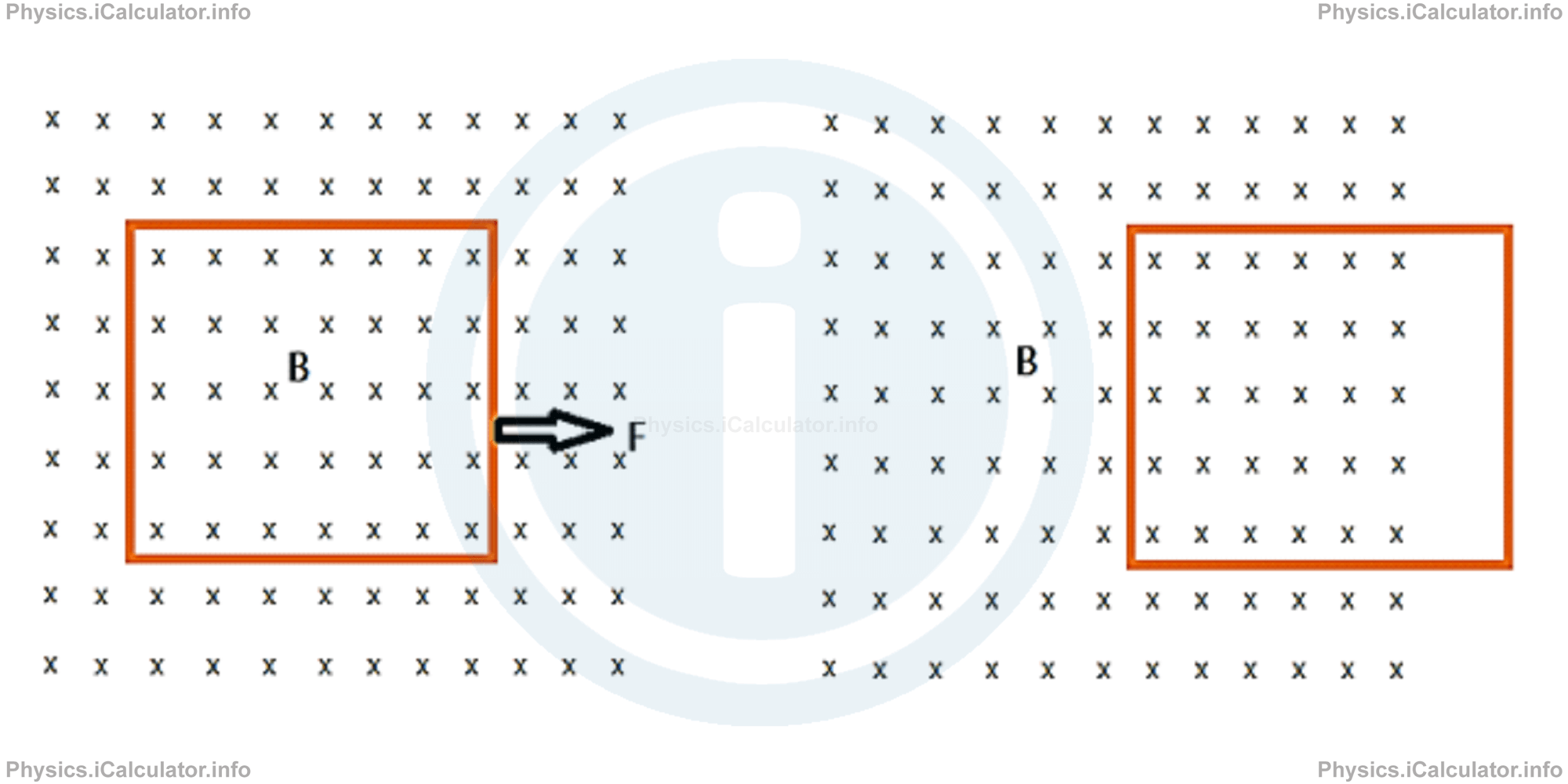Menu
Physics Lesson 16.10.1 - Induction and Energy Transfer
Please provide a rating, it takes seconds and helps us to keep this resource free for all to use
Welcome to our Physics lesson on Induction and Energy Transfer, this is the first lesson of our suite of physics lessons covering the topic of Induction and Energy Transfers, you can find links to the other lessons within this tutorial and access additional physics learning resources below this lesson.
Induction and Energy Transfer
It is a known fact (from Lentz law) that when a magnet is moving towards or away from a coil, a resistive effect in the form of magnetic force is produced in the coil - an effect which is in the opposite direction to the external force exerted on the coil - in order to move the magnet. This external force does positive work on the system, resulting in an increase in the energy of the system. The current induced in the coil produces a resistance in it, resulting in the delivering of a certain amount of thermal energy. In other words, the energy produced due to the magnet's motion (mechanical energy) is converted into thermal energy of the coil. All this process occurs without any direct contact, but through induction. Therefore, we say "induction results in a transfer of energy between the parts of a system." We have discussed this feature of induction when explaining the methods of energy transfer in Section 13, more precisely in the tutorial 13.4.
If the energy lost due to radiation is neglected, we say that the faster the magnet is moved, greater the work done by the external force in a certain time and therefore, greater the rate of energy transfer in the loop. This means the power of this energy transfer is greater when the magnet moves faster.
The moving direction of magnet is not important; as long as the magnet is moving, it transfers energy to the coil.

In the figure above, the magnetic flux through the solenoid (coil) is changing because when the magnet gets closer to the coil (direction 1), more magnetic field lines enter the area of coil compared to the case when the magnet moves away from the coil (position 2). In other words, the flux changes because the magnetic field produced by the moving magnet changes.
The same effect is obtained when we move a rectangular coil (as the one shown in the figure below) in the left-right and vice-versa direction.

During this process, the magnetic flux can change in two ways:
- By pulling the coil at non-uniform velocity, for example pulling it by applying an increasing or decreasing force. In this case, the flux changes due to the change in the number of magnetic field lines, despite the area is the same.
- By moving the coil in or out of magnetic field. In this case, the area in which the magnetic field lines punch the coil is changing. Thus, when we insert the coil inside the magnetic field the area increases, so the flux increases (remember that magnetic flux in uniform field is Φ = B ∙ A). On the other hand, when we move the coil out of the field the flux decreases as the area punched by magnetic field lines decreases (as shown in the second figure above).
The two situations described above, basically represent the same phenomenon - the change in magnetic flux in the coil. However, the setup shown in the last figure (the rectangular coil moving relative to a uniform magnetic field) offers a great advantage regarding the calculation of work done to move the coil out of the magnetic field, as the field lines here are parallel and uniformly distributed, unlike those produced when a bar magnet moves towards or away the solenoid. Therefore, we will consider only the second setup described above when calculating the amount of mechanical work done during this process.
You have reached the end of Physics lesson 16.10.1 Induction and Energy Transfer. There are 6 lessons in this physics tutorial covering Induction and Energy Transfers, you can access all the lessons from this tutorial below.
More Induction and Energy Transfers Lessons and Learning Resources
Whats next?
Enjoy the "Induction and Energy Transfer" physics lesson? People who liked the "Induction and Energy Transfers lesson found the following resources useful:
- Description Feedback. Helps other - Leave a rating for this description (see below)
- Magnetism Physics tutorial: Induction and Energy Transfers. Read the Induction and Energy Transfers physics tutorial and build your physics knowledge of Magnetism
- Magnetism Revision Notes: Induction and Energy Transfers. Print the notes so you can revise the key points covered in the physics tutorial for Induction and Energy Transfers
- Magnetism Practice Questions: Induction and Energy Transfers. Test and improve your knowledge of Induction and Energy Transfers with example questins and answers
- Check your calculations for Magnetism questions with our excellent Magnetism calculators which contain full equations and calculations clearly displayed line by line. See the Magnetism Calculators by iCalculator™ below.
- Continuing learning magnetism - read our next physics tutorial: Induced Electric Fields
Help others Learning Physics just like you
Please provide a rating, it takes seconds and helps us to keep this resource free for all to use
We hope you found this Physics lesson "Induction and Energy Transfers" useful. If you did it would be great if you could spare the time to rate this physics lesson (simply click on the number of stars that match your assessment of this physics learning aide) and/or share on social media, this helps us identify popular tutorials and calculators and expand our free learning resources to support our users around the world have free access to expand their knowledge of physics and other disciplines.
Magnetism Calculators by iCalculator™
- Angular Frequency Of Oscillations In Rlc Circuit Calculator
- Calculating Magnetic Field Using The Amperes Law
- Capacitive Reactance Calculator
- Current In A Rl Circuit Calculator
- Displacement Current Calculator
- Electric Charge Stored In The Capacitor Of A Rlc Circuit In Damped Oscillations Calculator
- Electric Power In A Ac Circuit Calculator
- Energy Decay As A Function Of Time In Damped Oscillations Calculator
- Energy Density Of Magnetic Field Calculator
- Energy In A Lc Circuit Calculator
- Faradays Law Calculator
- Frequency Of Oscillations In A Lc Circuit Calculator
- Impedance Calculator
- Induced Emf As A Motional Emf Calculator
- Inductive Reactance Calculator
- Lorentz Force Calculator
- Magnetic Dipole Moment Calculator
- Magnetic Field At Centre Of A Current Carrying Loop Calculator
- Magnetic Field In Terms Of Electric Field Change Calculator
- Magnetic Field Inside A Long Stretched Current Carrying Wire Calculator
- Magnetic Field Inside A Solenoid Calculator
- Magnetic Field Inside A Toroid Calculator
- Magnetic Field Produced Around A Long Current Carrying Wire
- Magnetic Flux Calculator
- Magnetic Force Acting On A Moving Charge Inside A Uniform Magnetic Field Calculator
- Magnetic Force Between Two Parallel Current Carrying Wires Calculator
- Magnetic Potential Energy Stored In An Inductor Calculator
- Output Current In A Transformer Calculator
- Phase Constant In A Rlc Circuit Calculator
- Power Factor In A Rlc Circuit Calculator
- Power Induced On A Metal Bar Moving Inside A Magnetic Field Due To An Applied Force Calculator
- Radius Of Trajectory And Period Of A Charge Moving Inside A Uniform Magnetic Field Calculator
- Self Induced Emf Calculator
- Self Inductance Calculator
- Torque Produced By A Rectangular Coil Inside A Uniform Magnetic Field Calculator
- Work Done On A Magnetic Dipole Calculator